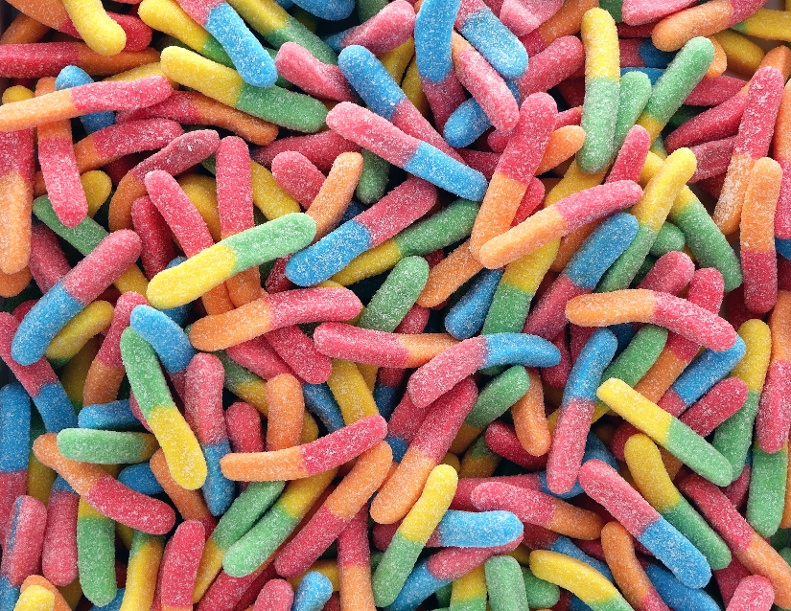Carbohydrates can be classified as monosaccharides, oligosaccharides, and polysaccharides.
Monosaccharides are simple carbohydrates containing between three and eight carbon atoms, the most common having five or six. They consist of a single sugar molecule – mono meaning ‘one’ and saccharide ‘sugar’.
Monosaccharides are often classified by both their number of carbon atoms and their functional group. For example, an aldohexose is a monosaccharide that contains a total of six carbon atoms including that of an aldehyde in its structure. Similarly, a ketopentose has five carbon atoms in its structure including the one in the keto group.
Three of the most important monosaccharides in foods are the six carbon sugars: glucose, fructose and galactose. All three dietary monosaccharides have the same number and kinds of atoms but in different arrangements, and they are absorbed directly into the bloodstream during digestion.
Glucose, C6H12O6, also known as D-glucose, dextrose, or grape sugar, is a simple sugar. Cells use it as the primary source of energy and a metabolic intermediate. The cells of the brain and the rest of the nervous system depend exclusively on glucose for their energy.
Across more than 50 countries, people discover food research with FSTA.
Glucose is one of the main products of photosynthesis and fuels cellular respiration. It’s known as an aldose sugar because it contains only one aldehyde (-CH=O) group per molecule. The chemical formula takes the form Cn(H2O)n.
From plant sources, fructose is found in honey, tree and vine fruits, flowers, berries and most root vegetables. It may be present as the monosaccharide and/or as a component of sucrose. Pure, dry fructose is a very sweet, white, odorless, crystalline solid and is the most water-soluble of all the sugars.
Commercially, fructose is usually derived from sugar cane, sugar beets and corn and there are three commercially important forms:
-
Crystalline fructose – the monosaccharide, dried and ground, and of high purity.
-
High-fructose corn syrup (HFCS) – a mixture of glucose and fructose as monosaccharides.
-
Sucrose – commonly known as table sugar and sometimes called saccharose.
All forms of fructose, including fruits and juices, are commonly added to foods and drinks for palatability, taste enhancement and improved browning of some foods, such as baked goods.
Galactose rarely occurs as a monosaccharide in food as it is a type of sugar that is less sweet than glucose. It is usually chemically bonded to glucose to form lactose, the primary sugar in milk and dairy products. During digestion galactose is freed as a simple sugar.
Galactose is found primarily in dairy products, sugar beets, and other gums and mucilages. It is also synthesised by the body, where it forms part of glycolipids and glycoproteins in several tissues.
More from our Thought for Food blog:
Cereals: Importance and composition
(Image Credit: kaboompics via www.pexels.com)
If you enjoy our blog posts, you may well benefit from using FSTA. This powerful resource has stood the test of time, providing invaluable research information to academic and professional food experts for over 50 years.
It provides over 1.4 million expertly sourced articles, all related to the sciences of food and drink.



